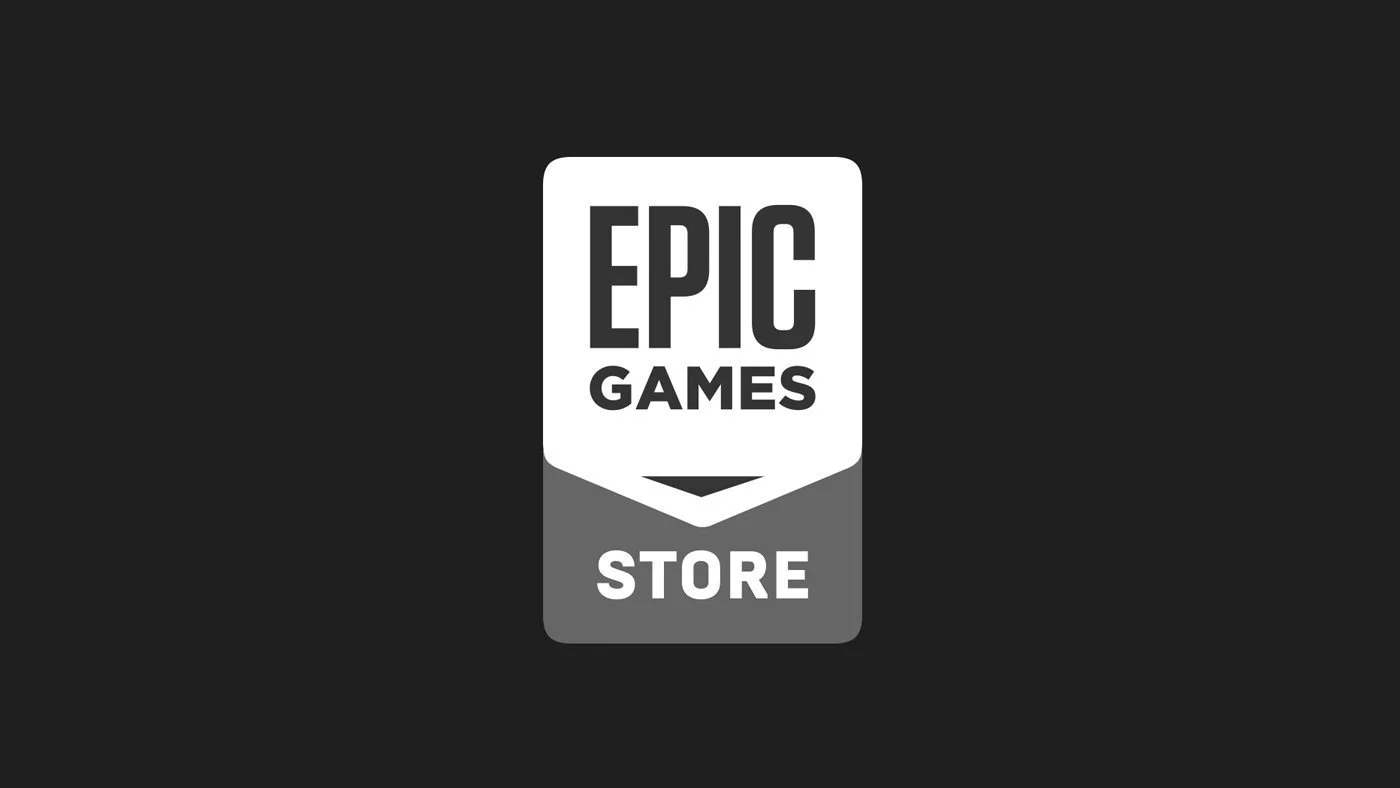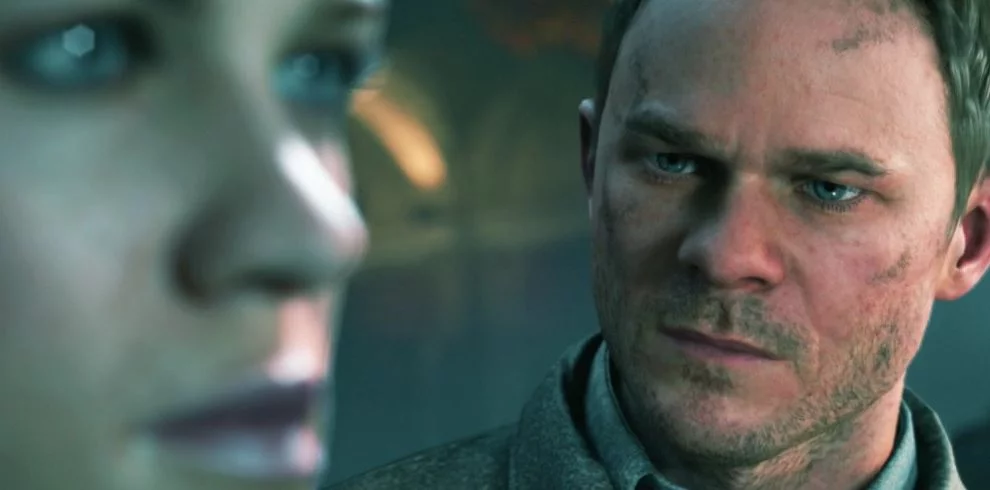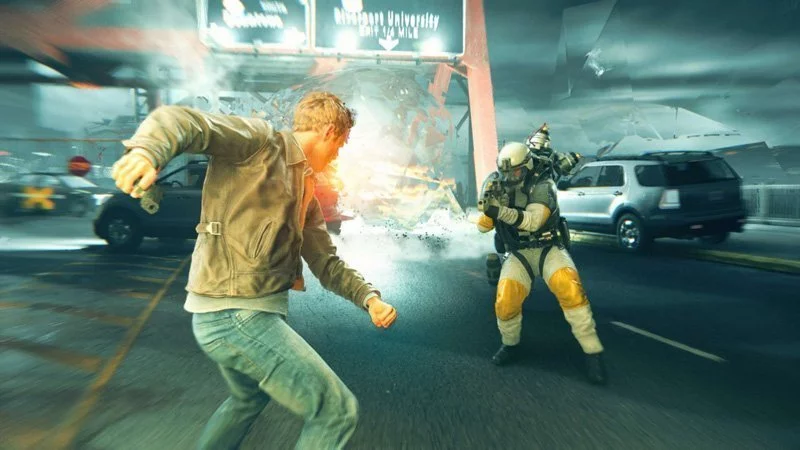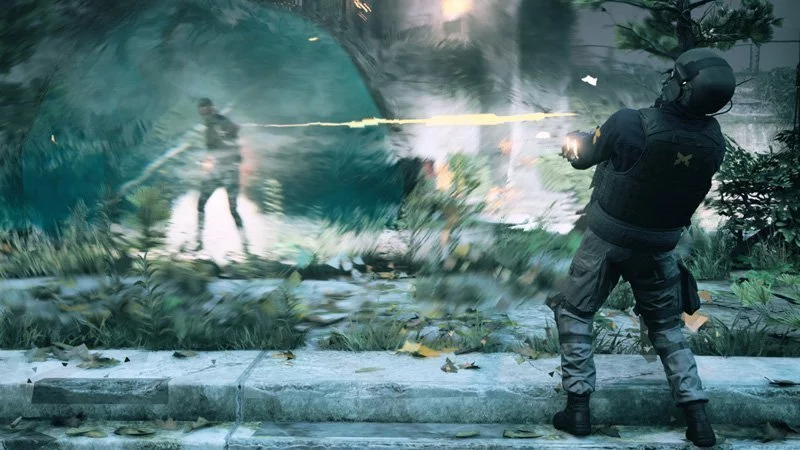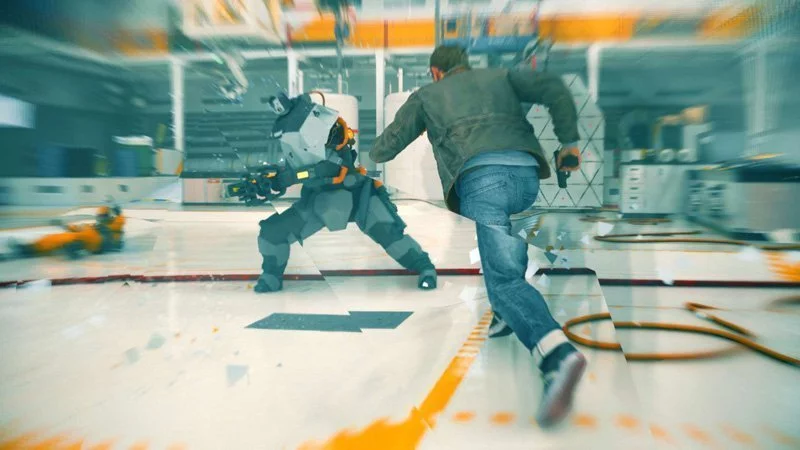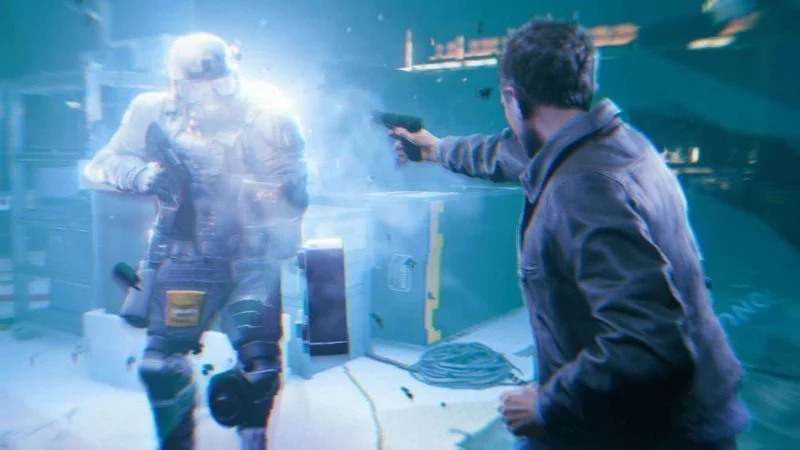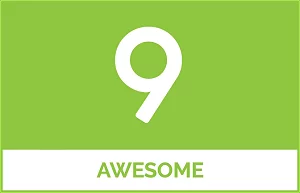In all honesty, I wasn’t sure about Quantum Break when it was first announced. Developed by Remedy, the minds behind Alan Wake and Max Payne? Great. Something to play on my Xbox One? Cool. Time travel? My favourite gaming trope.
Cross-media entertainment experience? Enhh.
Quantum Break was Remedy Entertainment’s experiment to try something a little different – a little new – in the gaming arena, and my immediate response was, “That sounds different and I don’t like it”. It was a dumb gut reaction, and after playing through the cross-media extravaganza, I’m happy to say it was wrong.
The game focuses on the story of Jack Joyce (played by former Iceman of the X-Men, Shawn Ashmore), his brother William (former Charlie of the Island, Dominic Monaghan) and his best friend, Paul Serene (current Littlefinger of Westeros, Aidan Gillen). Serene has constructed a functioning time machine, and after inviting Jack to help him activate it for the first time, everything goes wrong. Time starts to fracture, they both get sweet time powers, and the inevitable death of the universe looms as a secret para-military organisation descends to reduce Iceman to ice chips. Jack Joyce sets out to find out what happened, why it happened, save his brother and learn how to stop the universe from grinding to a halt forever.
Similar to Alan Wake, Quantum Break presents a third-person shooter with a twist. As Joyce makes his way through the narrative, you’ll be hampered by waves of goons from Monarch Solutions; rather than being a straight-up cover shooter, you’re able to take advantage of the game’s various time shenanigans. Over the course of the early chapters, Joyce rapidly unlocks a host of time-based abilities, such as the power to freeze a small area in time, move fast enough to seemingly teleport short distances, halt time around himself as a kind of shield and a few others I won’t spoil. On top of this, the degradation of time due to the fracture will occasionally freeze the entire world in place, allowing Joyce to stroll through his opponents at a leisurely pace, setting up various takedowns for the moment the world un-pauses. One of the greatest joys in these moments is the ability to restock your ammo by literally taking the guns out of soldiers’ hands, leaving them as very menacing mimes for the moment they start moving again.
Whilst these time mechanics may seem complex at first, they’re actually remarkably easy to integrate into your play style. Variously useful as quick takedowns, movement boosts and crowd control for large-scale encounters, it never feels like any one area is geared towards forcing you into a particular approach. While I could comfortably shield and dodge my way through most encounters as my preferred method of operating, there was just as much fun to be had zipping around the environment aggressively, or even acting as though it were a stock-standard cover shooter (if you really want to challenge yourself). The upgrade paths for each power are functional and quick to unlock at the early stages, though they don’t offer a huge amount of variety. Primarily focused on area of effect and number of uses, you won’t be left at a disadvantage by only upgrading your preferred skills if you don’t collect every upgrade point throughout its various acts.
While the upgrade trees may be a bit on the bland side, the environments of the game certainly aren’t. Flush with colour throughout, the harsh blues of frozen time and intense oranges of the Monarch soldiers really bring to life the city of Riverport as you explode your way through it. Every area is richly detailed and complex, even managing to prevent the game’s cover objects from feeling too blocky or obvious. The lush grounds and old buildings of the Riverport University contrast well with the grungy environs of the city’s docks or the sleek modern lines of the Monarch tech and buildings. It’s a dense world that manages to feel open and alive, despite being a directed narrative through some very pretty linear paths. Not every game manages to hide this fact as well, and it’s a credit to Remedy that I never felt like I was just being shuttled from one story scene to the next.
On top of the excellent environments, Quantum Break pretty much nails it on its character models. With each character being directly captured from the actors’ faces and movement, there’s always a strong risk of falling into the uncanny valley – case in point being LA Noire which, while being an amazing experiment in detailed expression in games, always felt like faces being projected on ill-fitting mannequins. Not so for Jack Joyce and company. Here, the characters truly FEEL like the actors, with amazingly detailed facial models that feel emotive and complex in a way I don’t think I’ve seen before. Character movement feels natural and easy, though this will always be better executed in cutscenes than gameplay. Possibly my favourite thing is that interactions between characters or with environmental objects don’t feel robotic or mis-handled, a hurdle that a lot of games don’t quite manage to overcome. With the exception of Shawn Ashmore’s eyes feeling a little TOO dazzlingly blue, you’d be forgiven for mistaking this for live-action footage at a glance.
And on that topic, we move on to that cross-media element of this experience – its slightly interactive TV episodes. Yes, based on incidental events you may uncover as Jack Joyce, known as Quantum Ripples — and end-of-act ‘Junction’ choices in brief sections playing as Paul Serene – you’ll get the option to view a TV-episode-length piece of live-action footage that varies based on how YOU play the game. While your Junction choices do impact the television show, the Quantum Ripples are nothing more than extremely brief cutaways of basically no importance. At any rate, these episodes are streamed live to your console or PC and of course star the actors behind the game’s various characters. Remedy has described them as optional extras that expand the narrative of the game, but honestly that’s wrong. Without these scenes there are various jumps in the narrative that are left unexplained between its five acts, as the live-action episodes focus primarily on the secondary cast and what they get up to without the big players around. These episodes have high production values and imitate the in-game effects of time distortion well, but ironically, the real problem with them is time.
These TV episodes are streamed to your device rather than being housed locally on the disc/install. As these episodes are produced at high definition levels, it’s a meaty amount of content to stream for a 20-30 minute episode. Despite having a high-speed connection to do just that, I found that all but the first episode left me experiencing near-constant buffering pauses. This wouldn’t be a problem if I had the YouTube-style option to select a lower definition stream, but no such luck; in my experience, it was apparently max resolution or nothing. It was only after suffering through 90% of an episode that my Xbox would warn me that my connection apparently wasn’t good enough to support the stream, and decided to throw in the towel. While a Microsoft representative has told Stevivor that the streaming episodes will be optimised to suit Australian internet, we’ll believe that when you all tell us they’re working as expected…
Either way, there is an option to download the episodes for local play instead – though sadly, this is a complete bundle of all the episodes in every variation, meaning the install size for the DLC is twice that of the game itself – a whopping 75GB. Having watched a video file before, I understand this means that there is literally a separate file for every branching story option. Rather than being composed of separate parts stitched together in various combinations to achieve every outcome, Remedy seems to have instead opted to have potentially dozens of complete, separate video files for every option – even if you’ll never see them. It’s a disappointing solution to a problem a lot of players will face, especially in Australia where the average Internet connection is a lot slower than our American counterparts.
That aside, it was surprising just how much the narrative of the episodes and game COULD branch. Remedy made it clear that the game has a single ending, but many paths for how to get there based on your decisions. In discussion with Stevivor editor Steve Wright, it was surprising to find just how much our choices changed our individual experiences and narratives within the game, especially towards its latter third, even though everything does come back to one defined ending. We experienced different allies and enemies, had different characters survive or perish and even fought in boss battles that the other didn’t; this game is bound to elicit water cooler discussions where players compare and contrast just what happened in their Quantum Break playthrough.
Through all these variants and time travel shenanigans, Quantum Break‘s narrative remains easy enough to follow without needing to draw a diagram, a common problem with any story involving time travel. My only complaint is that a certain time-related enemy type was hyped up through most of the game and even makes an appearance in the story towards the end, but I never got the chance to actually FIGHT one. When I can find a journal entry in-game talking about just how hard they are to kill, I expect to be given the chance to try it at some point. Or several.
All in all, Quantum Break has a lot more to offer than I would have expected: a strong, branching story with a definite opening to continue, solid gunplay and time manipulation mechanics, a stellar cast and a good reason to replay. Setting aside a final boss battle that still leaves a bad taste in my mouth, Remedy has made a great narrative experience for Microsoft platforms. If you’re looking for your next big game, seriously consider taking Jack Joyce for a spin – but maybe free up some hard drive space for that big episode download first, just in case.
Quantum Break was reviewed using a promotional code on Xbox One, as provided by the publisher. Click here to learn more about Stevivor’s scoring scale.
This article may contain affiliate links, meaning we could earn a small commission if you click-through and make a purchase. Stevivor is an independent outlet and our journalism is in no way influenced by any advertiser or commercial initiative.



